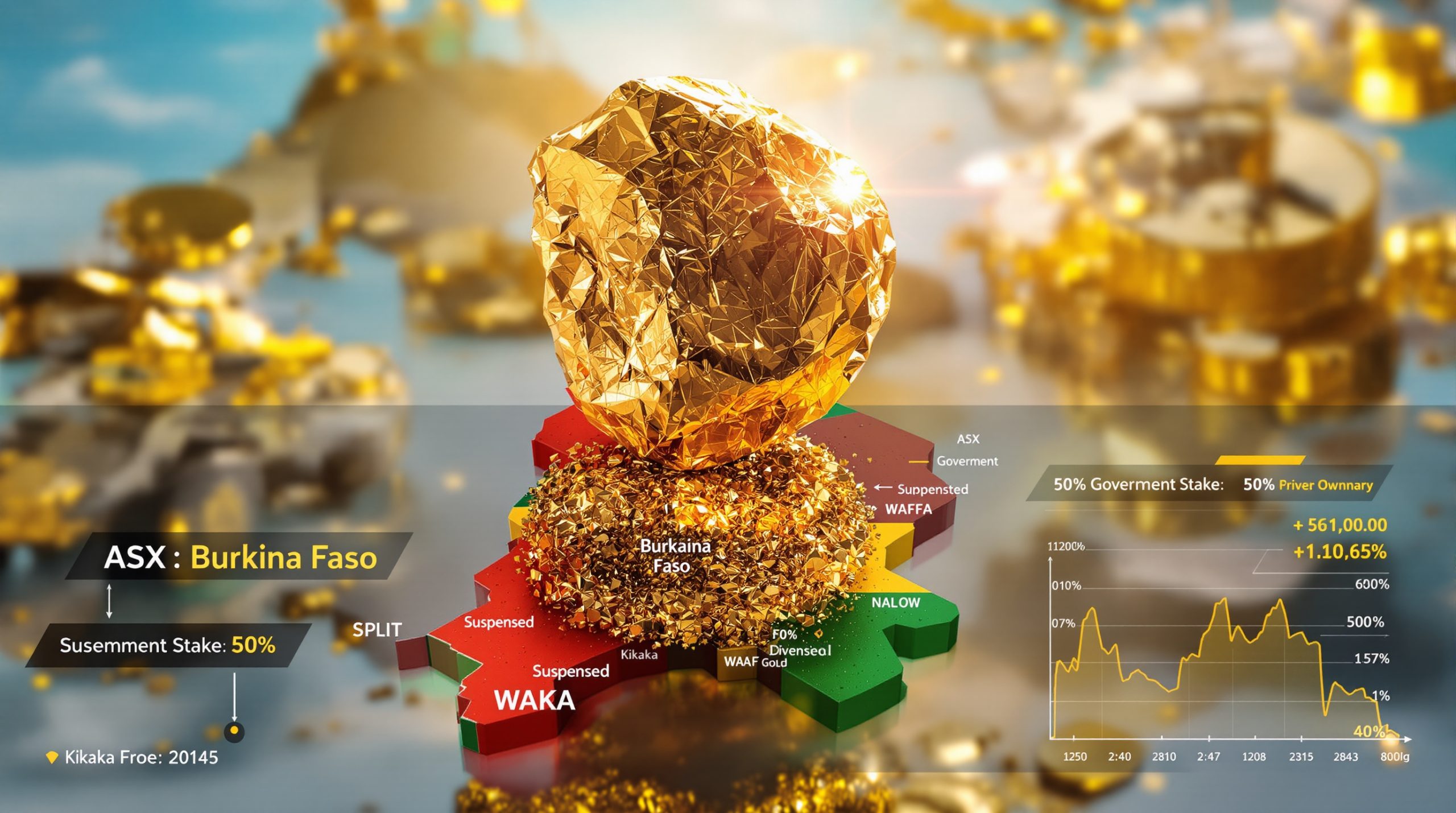What's Driving Central Banks Away from the US Dollar?
The global monetary landscape is experiencing a significant shift as central banks worldwide reconsider their long-standing reliance on the US dollar. According to a comprehensive survey conducted by the Official Monetary and Financial Institutions Forum (OMFIF) between March and May 2025, which included 75 central banks, there's a growing trend of institutions reducing their dollar holdings in favor of alternative assets.
Geopolitical Tensions and Trade Fragmentation
Geopolitical instability and the fragmentation of the world trade system have emerged as primary catalysts driving central banks away from the US dollar. The survey reveals a striking statistic: 70% of surveyed central banks now report hesitation about investing in USD due to the US political environment—more than double the percentage recorded just one year ago.
"The fragmentation of global trade networks and increasing geopolitical tensions have created a perfect storm for reserve managers seeking stability and diversification," notes the OMFIF report.
This dramatic shift in sentiment coincides with the introduction of "reciprocal tariff" policies by the US administration in early April 2025. These tariffs impact markets and have triggered significant market volatility, creating ripple effects throughout the global financial system and undermining confidence in US-denominated assets.
US Dollar's Declining Position in Reserve Portfolios
Perhaps most telling is the dollar's dramatic fall in popularity among reserve managers. The once-dominant currency has plummeted from being the most preferred currency in the 2024 survey to seventh place in 2025—a remarkable reversal in just twelve months.
Despite this decline, long-term projections indicate the dollar will maintain its position as the world's top reserve currency through 2035, though with a diminished share. Current estimates suggest the USD's portion of global foreign exchange reserves will decline from approximately 58% today to around 52% over the next decade.
This shift isn't limited to currency markets alone. Traditional safe-haven assets like US Treasuries are experiencing a notable pullback alongside dollar weakness, suggesting a broader reassessment of US-based assets within central bank portfolios.
How Are Central Banks Restructuring Their Reserves?
As central banks move away from dollar dominance, they're actively restructuring their reserves across three primary alternatives: gold, the euro, and the Chinese yuan. This diversification strategy reflects a calculated approach to navigating an increasingly multipolar financial world.
The Growing Appeal of Gold
Gold has emerged as a significant beneficiary of central banks' diversification efforts. The OMFIF survey reveals that one-third of surveyed central banks plan to increase their gold holdings within the next 1-2 years—the highest level of planned gold acquisition in at least five years.
Even more striking is the long-term commitment to the precious metal, with 40% of central banks indicating intentions to further increase gold reserves over the next decade. This sustained interest underscores gold's enduring appeal as a non-sovereign reserve asset during times of geopolitical uncertainty.
"After years of record-breaking central bank gold purchases, reserve managers are doubling down on gold," the OMFIF report notes, highlighting the metal's resurgence in central bank portfolios.
This pivot toward gold represents a significant shift in reserve management philosophy, as central banks increasingly prioritize assets that can maintain value independent of any single nation's economic or political challenges. Recent gold price analysis shows this demand has contributed to record-breaking price levels.
Euro's Resurgence as a Reserve Currency
The euro is experiencing a remarkable revival in its reserve currency status. According to the survey, 16% of central banks plan to increase euro holdings in the next 12-24 months, positioning it as the most popular currency for near-term reserve expansion. This represents a significant improvement from just 7% planning euro increases in 2024.
Foreign exchange reserve managers have become notably more positive about the euro following the implementation of US tariff dynamics. This renewed confidence is expected to help the euro regain reserve share lost in the aftermath of the 2011 European debt crisis.
Based on projections from three sources directly involved with foreign exchange reserve managers, the euro is expected to rebound from its current approximately 20% share to around 25% by 2030—a substantial recovery that strengthens the currency's position in the global reserve system.
The Rising Role of Chinese Yuan
The Chinese yuan closely follows the euro in popularity for near-term reserve allocation plans. However, from a long-term perspective spanning the next decade, the yuan demonstrates even stronger appeal than its European counterpart.
The OMFIF survey indicates that 30% of central banks expect to increase yuan holdings over the next ten years. This growing confidence is projected to triple the yuan's share in global reserves to approximately 6% in the coming years.
This marked shift reflects increasing central bank confidence in the Chinese currency as Beijing continues its gradual process of capital account liberalization and financial market development. The yuan's growing international role represents one of the most significant developments in the evolution of the global reserve system.
What Does This Mean for the Global Financial System?
The restructuring of central bank reserves signals a profound transformation in the global financial architecture. These shifts carry important implications for markets, investors, and policymakers as the world adapts to a more diversified reserve currency landscape.
Implications for Traditional Safe-Haven Assets
Gold stands to benefit considerably from central banks' diversification strategies. The precious metal's unique status as a non-sovereign reserve asset makes it particularly attractive during periods of geopolitical uncertainty and currency volatility.
The record-breaking pace of central bank gold purchases observed in recent years appears poised to continue, providing structural support for gold prices. Meanwhile, US Treasuries—long considered the ultimate safe-haven asset—face mounting pressure as central banks systematically reduce their dollar exposure.
This rebalancing creates potential for increased price volatility in traditional safe-haven markets as institutional flows shift toward a broader range of assets. For investors, this environment demands a recalibration of risk assessment frameworks and diversification strategies.
The Multipolar Reserve Currency Future
The current trend suggests an acceleration toward a more diversified global reserve system, moving away from the dollar-dominated framework that has characterized international finance since the mid-20th century.
While the dollar will retain its position as the dominant reserve currency, its relative importance is diminishing. Concurrently, the euro appears poised for significant recovery in global reserve share, while the yuan continues gaining legitimacy as an international reserve currency.
Gold's increasing importance as a non-sovereign reserve asset further underscores this shift toward a multipolar system. Central banks are effectively hedging against currency-specific risks by diversifying across a broader spectrum of assets.
Market Volatility and Investment Considerations
These shifting reserve compositions may create both challenges and opportunities in currency markets. As central banks adjust their holdings, increased volatility in exchange rates becomes more likely, particularly during periods of economic or geopolitical stress.
Gold price support is likely to continue due to sustained central bank demand, creating a potential floor for the precious metal even amid broader market fluctuations. Similarly, the euro and yuan may experience structural strengthening against the dollar over the medium to long term as reserve allocations shift in their favor.
For investors, these developments necessitate a reconsideration of traditional safe-haven allocation strategies. The conventional approach of seeking dollar-denominated assets during periods of uncertainty may require adjustment in a world where central banks themselves are diversifying away from the greenback.
FAQ: Central Bank Reserve Diversification
Why are central banks reducing their US dollar holdings?
Central banks cite geopolitical tensions, trade fragmentation effects, and the US political environment as key factors driving diversification away from the dollar. The OMFIF survey reveals that 70% of central banks express hesitation about dollar investments due to the US political climate—a dramatic increase from the previous year.
Recent policy developments, particularly the "reciprocal tariff" introduced in April 2025, have accelerated this trend by triggering market volatility and undermining confidence in US assets. These tariffs created significant disruptions in global trade flows, prompting reserve managers to reassess their dollar exposure.
Which alternative assets are central banks favoring?
Gold, the euro, and the Chinese yuan have emerged as the primary beneficiaries of central bank diversification efforts. Gold continues to attract strong interest for its role as a non-sovereign reserve asset, with one-third of central banks planning to increase holdings in the near term and 40% intending to boost allocations over the next decade.
The euro has regained popularity after years of post-debt crisis decline, with 16% of central banks planning increased holdings—making it the most favored currency for near-term expansion. The yuan shows particularly strong long-term appeal, with 30% of central banks projecting increased allocations over the next ten years.
Will the US dollar lose its status as the world's primary reserve currency?
While the dollar's share in global reserves is projected to decline from 58% to approximately 52% by 2035, it is expected to maintain its position as the dominant reserve currency. However, the trend clearly indicates an acceleration toward a more multipolar reserve currency system with increased roles for the euro, yuan, and gold.
This evolution represents a significant shift from the post-World War II monetary order but stops short of a complete overthrow of dollar dominance. Rather, we're witnessing a gradual rebalancing toward a more diversified global reserve system that better reflects the multipolar nature of the modern global economy.
How significant is the increase in central bank gold purchases?
The OMFIF survey reveals that one-third of central banks plan to increase gold holdings in the next 1-2 years—the highest level in at least five years. Additionally, 40% intend to increase gold reserves over the next decade, suggesting sustained long-term demand for the precious metal.
This pattern represents a fundamental reassessment of gold's role in central bank reserves following decades of reduced importance. The metal's appeal as a hedge against currency depreciation and geopolitical risk appears to be growing as monetary authorities seek assets that can maintain value independent of any single nation's policies.
Future Outlook for Global Reserve Assets
The evolution of central bank reserve composition over the coming decades will likely reflect broader shifts in the global economic and geopolitical landscape. Current projections provide a roadmap for understanding these emerging trends and their potential implications.
Projected Reserve Currency Composition by 2035
Based on current trajectories identified in the OMFIF survey, the global reserve currency landscape is expected to undergo significant but gradual transformation:
- US dollar: Expected to decline from 58% to approximately 52% of global reserves
- Euro: Projected recovery from approximately 20% to around 25% by 2030
- Chinese yuan: Anticipated to triple its share to 6% of global reserves
- Gold: Continued strong demand from central banks likely to support prices and increase allocations
This recalibration reflects a gradual diversification rather than a dramatic regime change. The dollar will remain the dominant currency, but in a system characterized by a more balanced distribution across multiple reserve assets.
Factors That Could Accelerate or Reverse These Trends
Several key variables could significantly influence the pace and direction of these reserve allocation shifts:
-
Changes in US fiscal and monetary policy: Modifications to the Federal Reserve's approach or significant shifts in US government spending and debt management could either reinforce or counteract current trends.
-
Evolution of eurozone economic integration: Further progress toward fiscal union or, conversely, renewed fragmentation pressures within the eurozone would directly impact the euro's appeal as a reserve currency.
-
China's progress in capital account liberalization: The pace at which Beijing opens its financial markets to international capital flows will heavily influence the yuan's adoption as a global reserve asset.
-
Geopolitical developments: Shifts in international alliances, trade relationships, and security arrangements could dramatically accelerate or reverse current reserve diversification trends.
-
Emergence of digital currencies: Central bank digital currencies (CBDCs) and their potential role in reserve portfolios represent a wild card that could fundamentally reshape the reserve currency landscape.
Disclaimer: The projections and analyses presented in this article are based on current trends and expert assessments. Future developments in global finance, geopolitics, and monetary policy could significantly alter these trajectories. Investors should consult with financial professionals before making decisions based on these forecasts.
The decline in US dollar's appeal and global central banks' shift to gold, euro, and yuan represents one of the most significant transformations in international finance since the collapse of the Bretton Woods system. While these changes will unfold gradually over years rather than months, they signal a fundamental evolution in how central banks approach reserve management in an increasingly multipolar world.
For investors, policymakers, and market participants, understanding these shifts is essential for navigating the complex financial landscape of the coming decades. The era of unchallenged dollar dominance appears to be giving way to a more diversified global reserve system—one that better reflects the complex economic and political realities of the 21st century. Understanding current gold market trends has become increasingly essential for investors in this changing landscape.
Ready to Capitalise on the Next Gold Discovery?
Track the latest ASX gold discoveries in real-time with Discovery Alert's proprietary Discovery IQ model, which instantly identifies significant mineral announcements with substantial return potential. Explore why major discoveries can lead to exceptional investment outcomes by visiting our dedicated discoveries page and start your 30-day free trial today.




